The document is a lecture presentation on algorithms and computer graphics for game developers and computer scientists. It covers the following topics: - An introduction to the course, which will cover algorithms, computer graphics using Three.js, mathematics, and physics for 3D simulations. - A discussion of algorithms, including their definition, characteristics, design, optimization, and programming examples. Big-O notation for analyzing algorithm efficiency is also introduced. - An overview of the class structure, which will include weekly lessons, quizzes, homework, and group discussions. - A section on simple algorithms, including examples to calculate factorials and an explanation of recursion versus iteration. - An introduction to Big-O
![ALGORITHMS, COMPUTER GRAPHICS, AND MATHEMATICS FOR GAME DEVELOPERS & COMPUTER SCIENTISTS Class[1]: Introduction to Algorithms, Big-O Notation Presented by Dr. Saajid Abuluaih - May 2021 -](https://image.slidesharecdn.com/class123edmay-algorithms-210527032448/75/Class-1-23ed-may-algorithms-1-2048.jpg)
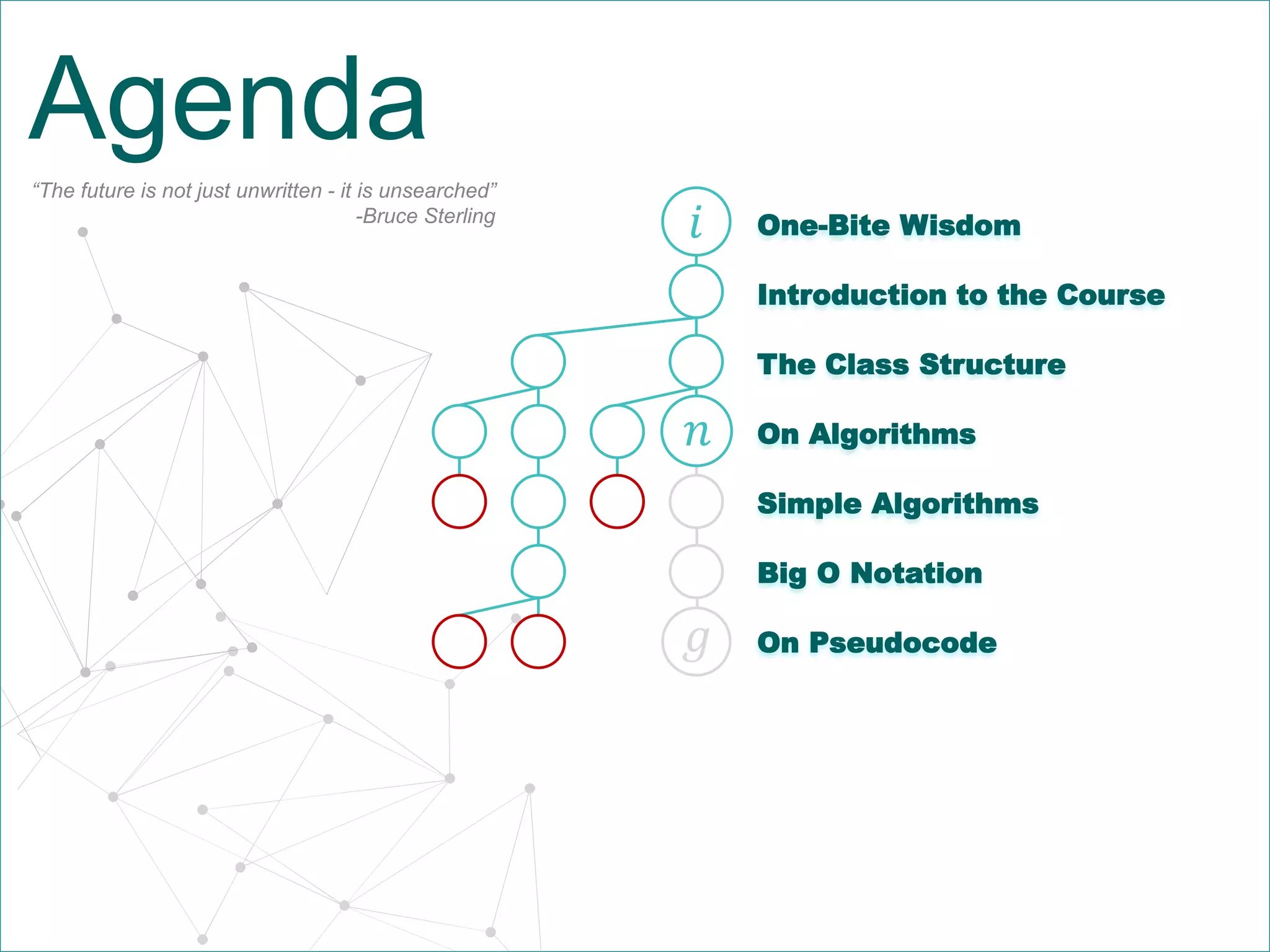


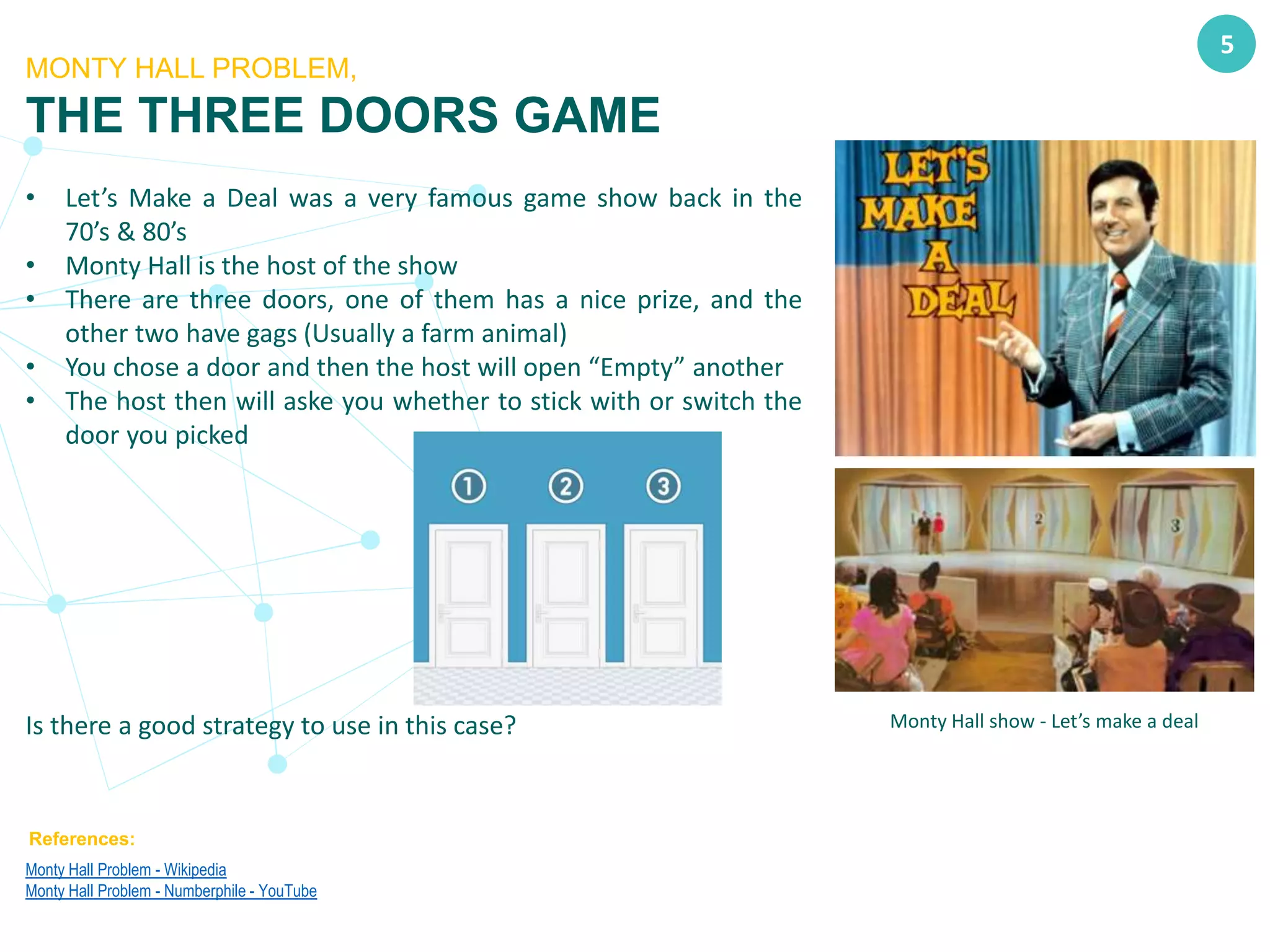
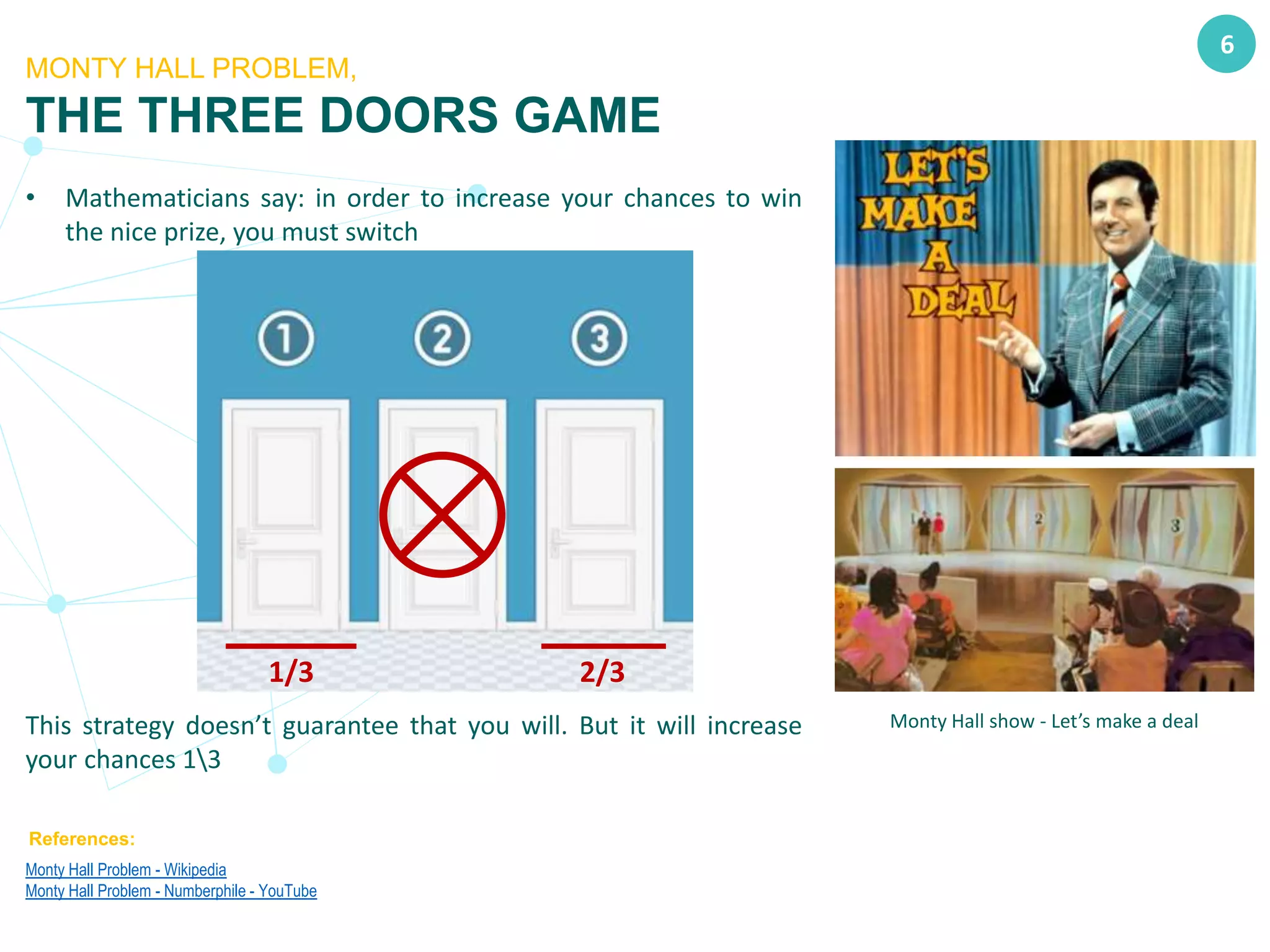


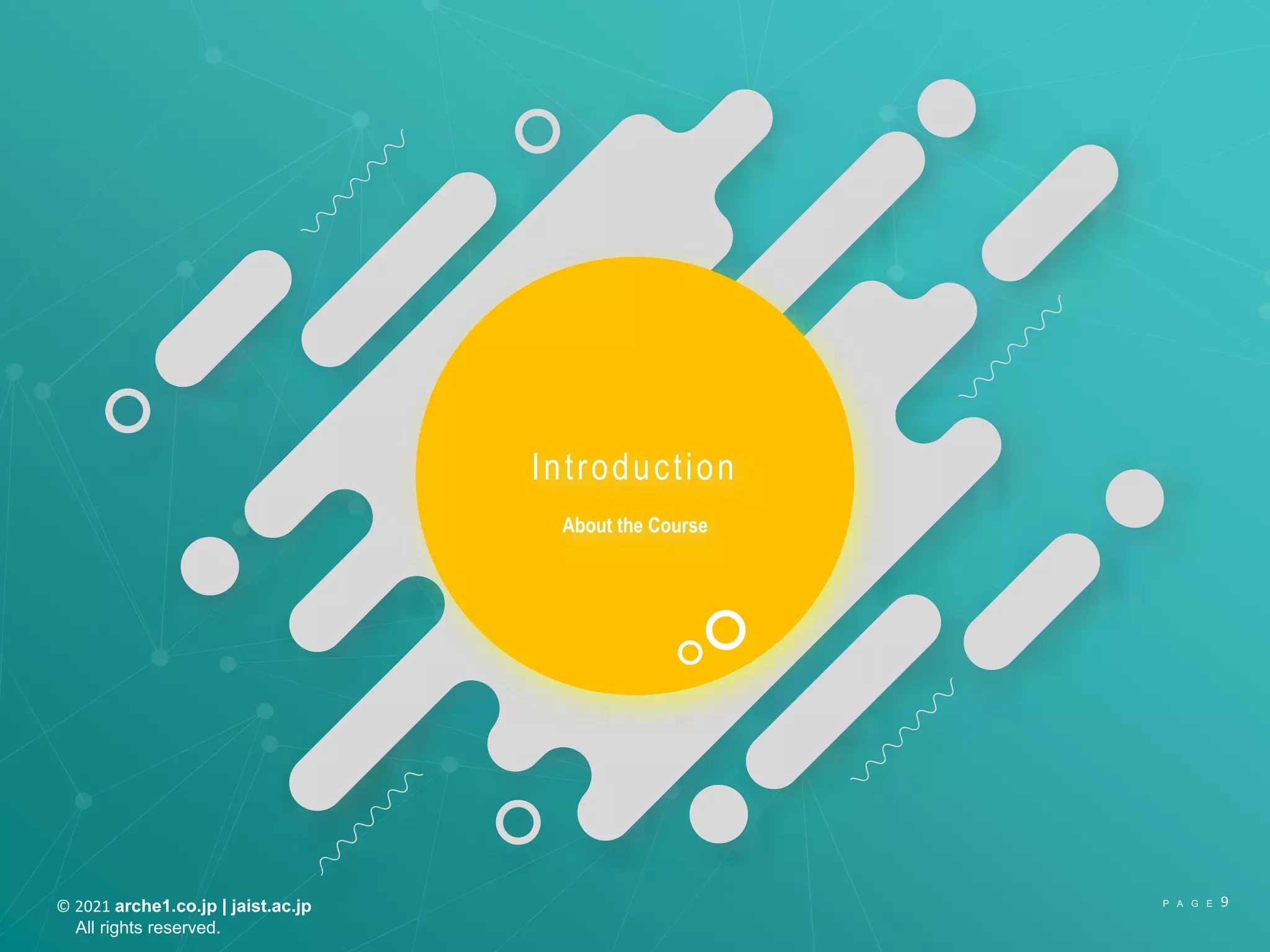
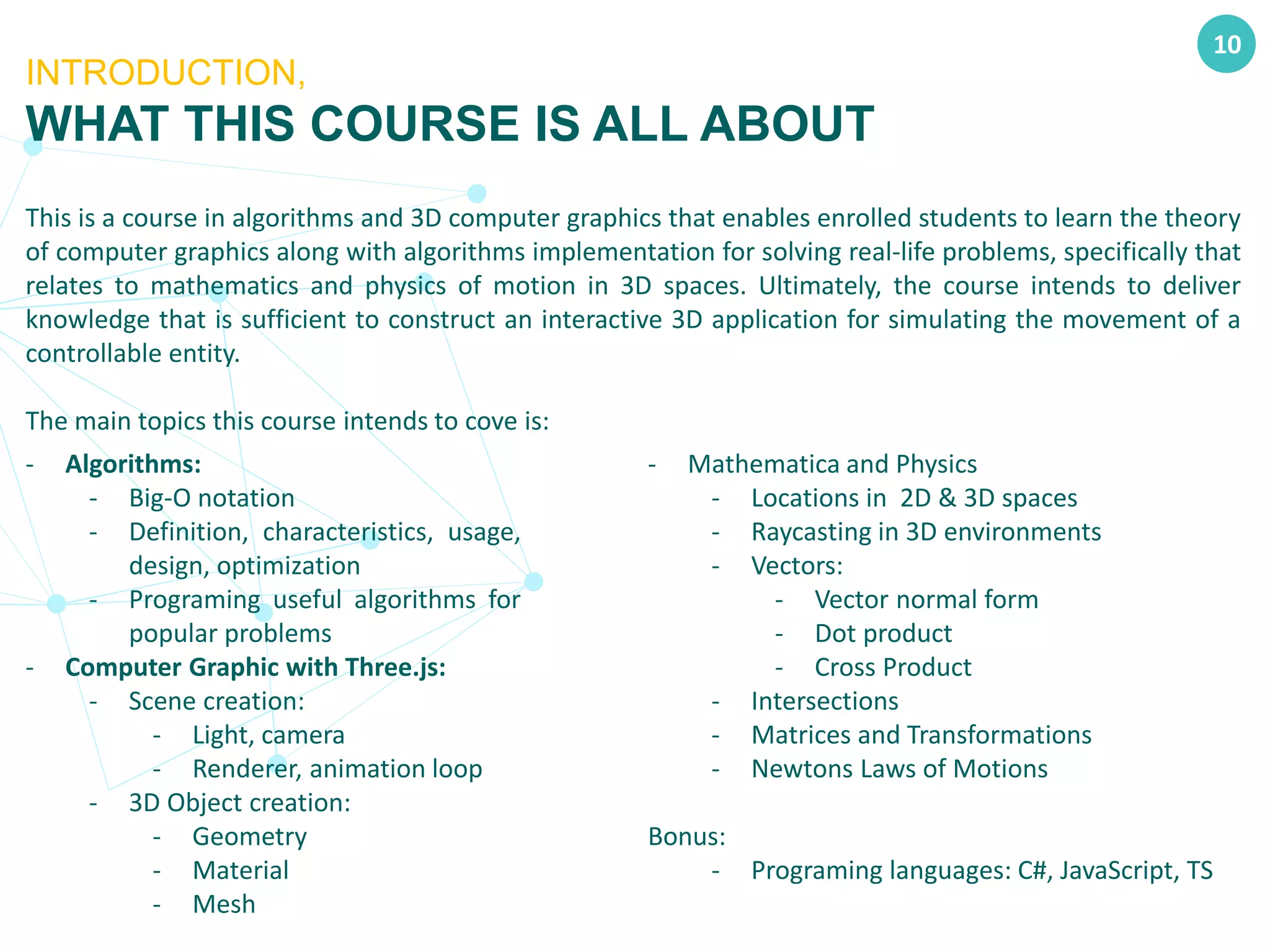

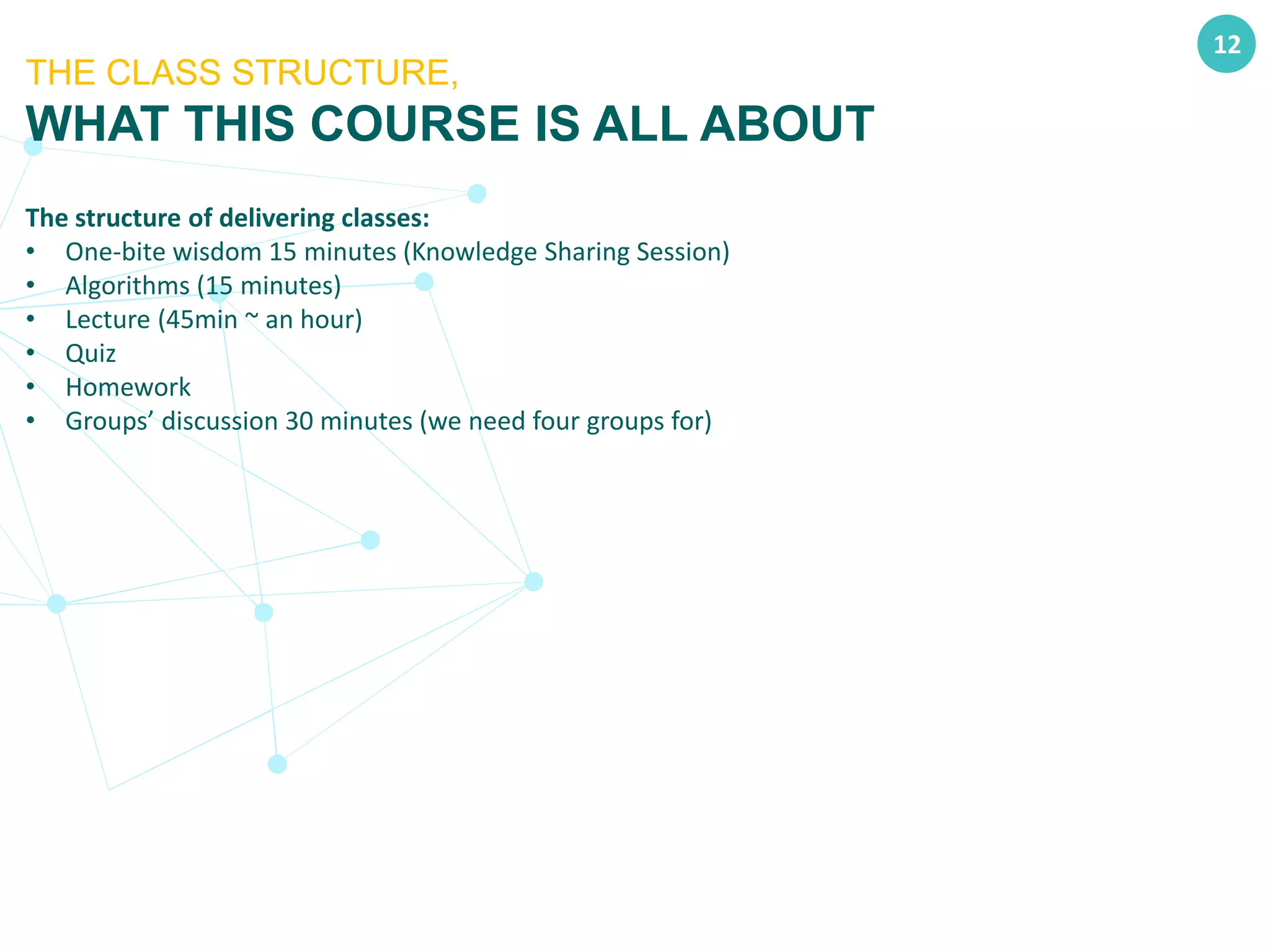






![© 2021 arche1.co.jp | jaist.ac.jp All rights reserved. P A G E 19 Quiz [1] Answer This Question … IF YOU CAN](https://image.slidesharecdn.com/class123edmay-algorithms-210527032448/75/Class-1-23ed-may-algorithms-19-2048.jpg)
![• Write the implementation of the following flowchart using your favorite coding language. [Homework] • What does the algorithm in the flowchart do? • What is the output of the algorithm if N was 15? 20 Quiz [1] What is the output of the following algorithm? Start Total = 0 i = 0 Read N Is count < N Print N Total = Total + N i = i + 1 End](https://image.slidesharecdn.com/class123edmay-algorithms-210527032448/75/Class-1-23ed-may-algorithms-20-2048.jpg)


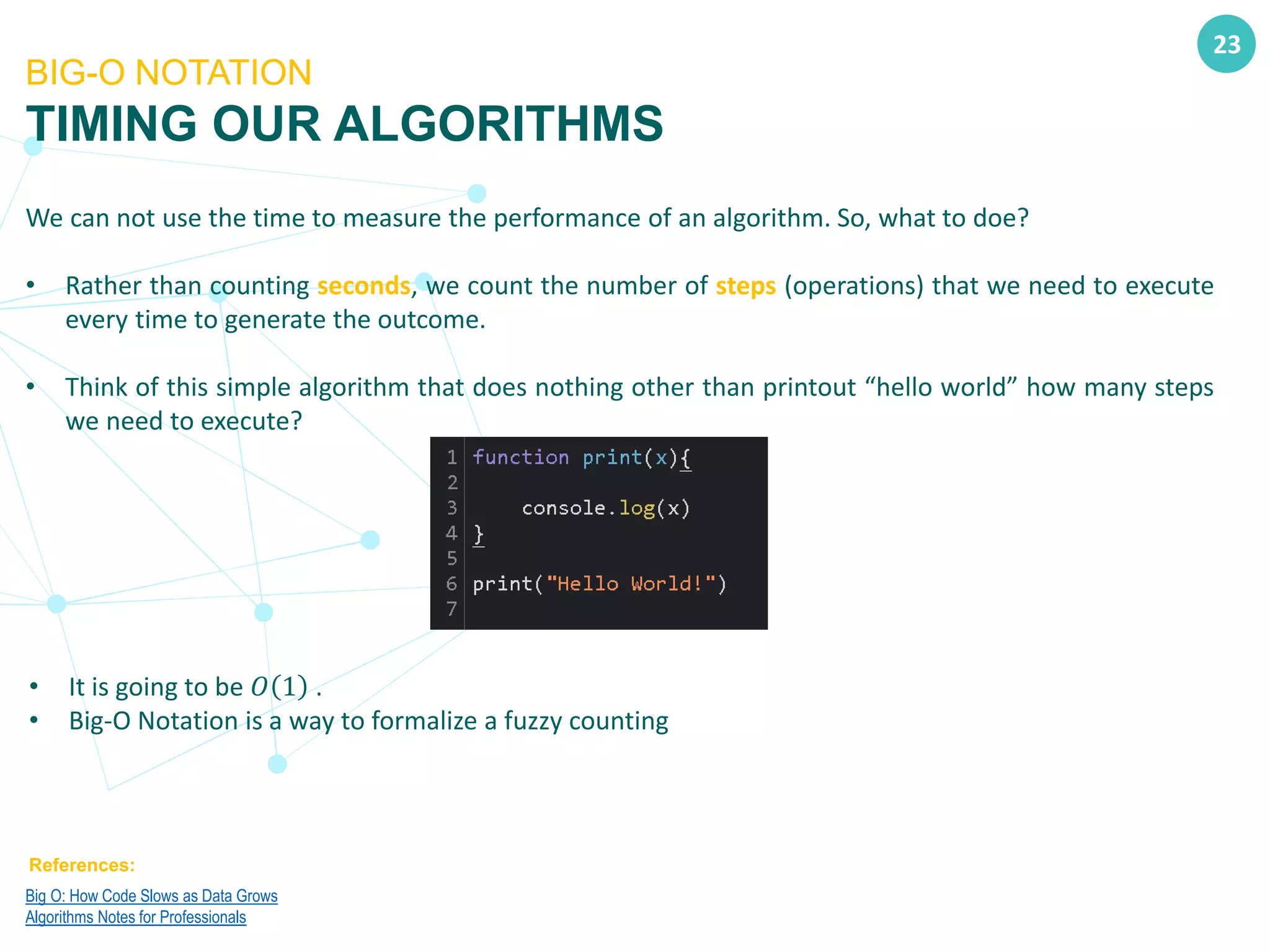
![What is the time complexity for the following algorithms: 24 BIG-O NOTATION LET’S EXAMINE the number of steps needed in algorithm THIS FUNCTION [P1] References: Big O: How Code Slows as Data Grows Algorithms Notes for Professionals How about his one: It is liner, 𝑂(𝑁) It is liner, 𝑂(1)](https://image.slidesharecdn.com/class123edmay-algorithms-210527032448/75/Class-1-23ed-may-algorithms-24-2048.jpg)
![What is the time complexity for the following function: 25 BIG-O NOTATION LET’S EXAMINE the number of steps needed in algorithm THIS FUNCTION [P2] References: Big O: How Code Slows as Data Grows Algorithms Notes for Professionals What do you think this is? Quadratic 𝑂(𝑁2 ) It is 𝑂(log(𝑁))](https://image.slidesharecdn.com/class123edmay-algorithms-210527032448/75/Class-1-23ed-may-algorithms-25-2048.jpg)


![© 2021 arche1.co.jp | jaist.ac.jp All rights reserved. P A G E 28 Quiz [2] Answer This Question … IF YOU CAN](https://image.slidesharecdn.com/class123edmay-algorithms-210527032448/75/Class-1-23ed-may-algorithms-28-2048.jpg)
![• What is the Big-O notation for the following algorithm? • Is there anyway to enhance it? 29 Quiz [1] What is the time complexity of the following? Start Total = 0 i = 0 Read N Is count < N Print N Total = Total + N i = i + 1 End](https://image.slidesharecdn.com/class123edmay-algorithms-210527032448/75/Class-1-23ed-may-algorithms-29-2048.jpg)
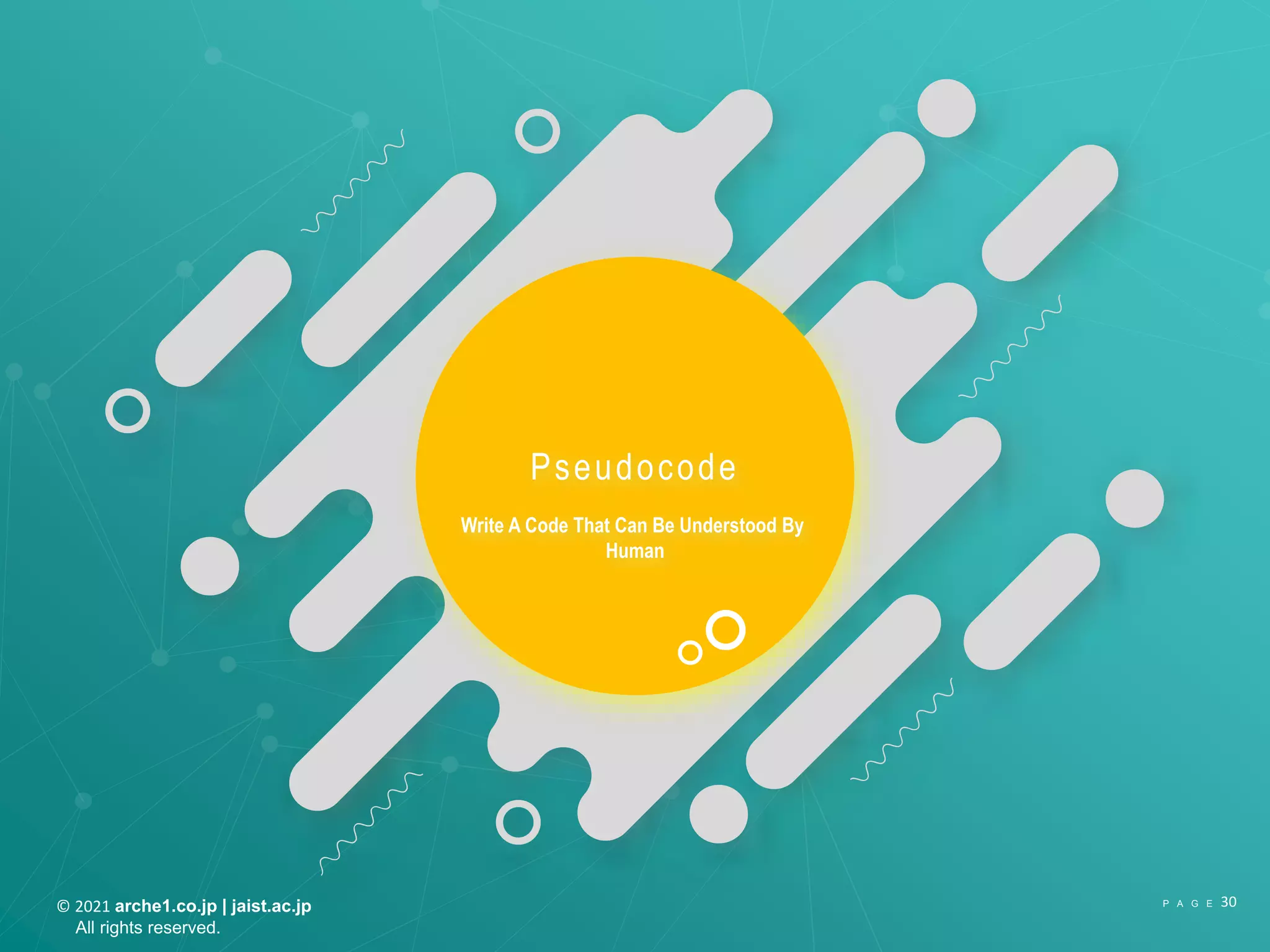
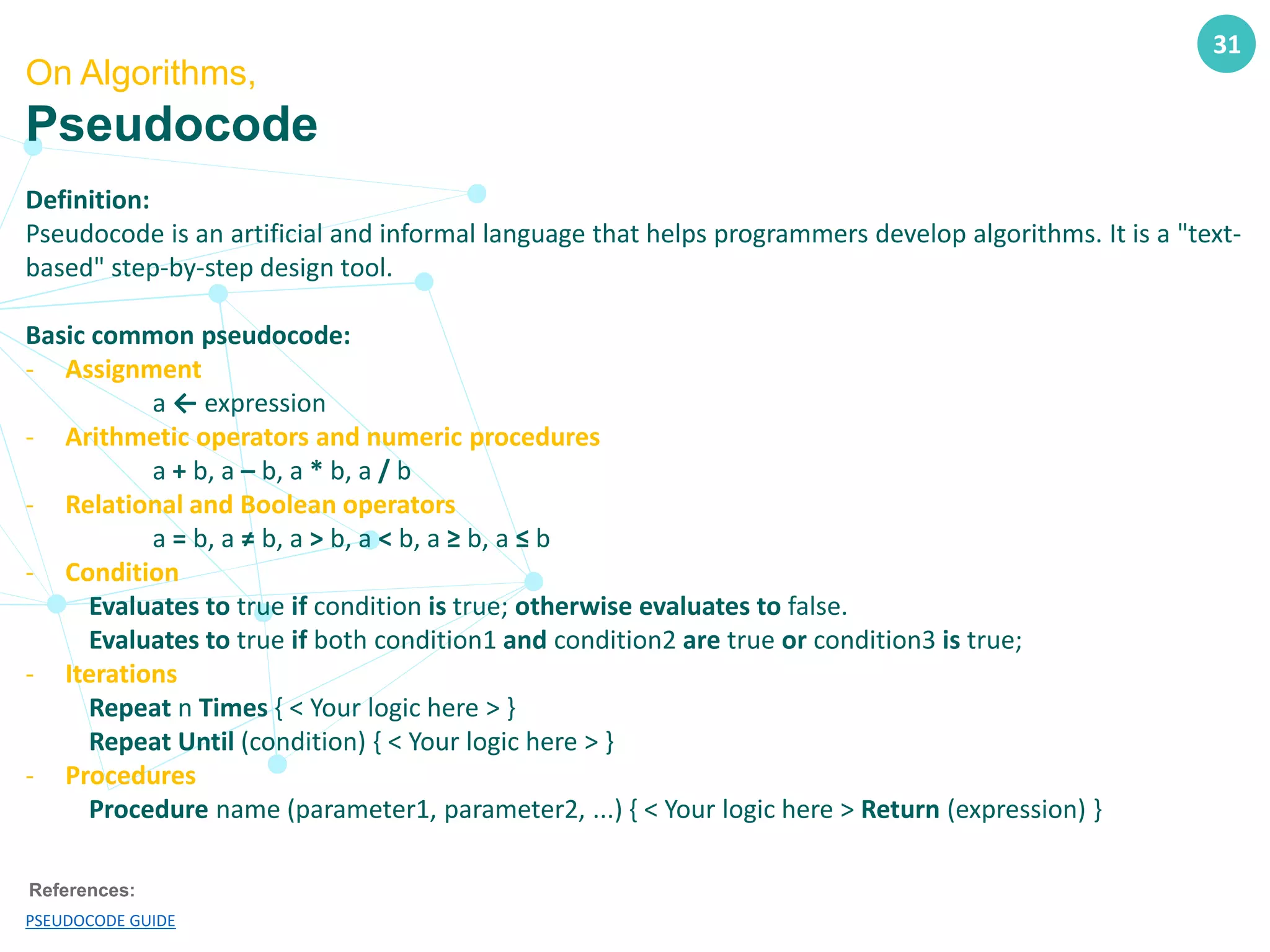

![Find any simple problem, and design two different algorithms that lead to the same result: • Use the flowcharts you learnt about today to present your algorithms • What is the time complexity (Big-O notation) of the algorithms that you are going to design • Write the pseudocode of your algorithms Read Chapter 3 of [Algorithms: Notes for Professional] and: • Summarize Big-Theta notation • Summarize Big-Omega Notation 33 DEADLINE 27/5 3/6, HOMEWORK](https://image.slidesharecdn.com/class123edmay-algorithms-210527032448/75/Class-1-23ed-may-algorithms-33-2048.jpg)
